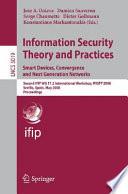
The Place of Information Technology in Management and Business Education
TC3 WG3.4 International Conference on the Place of Information Technology in Management and Business Education 8–12th July 1996, Melbourne, Australia
The power of modern information systems and information technology (lSIIT) offers new opportunities to rethink, at the broadest levels, existing business strategies, approaches and practices. Over the past decade, IT has opened up new business opportunities, led to the development of new strategic IS and challenged all managers and users of ISIIT to devise new ways to make better use of information. Yet this era which began with much confidence and optimism is now suffering under a legacy of systems that are increasingly failing to meet business needs, and lasting fixes are proving costly and difficult to implement. General management is experiencing a crisis of confidence in their IS functions and in the chiefinformation systems officers who lead them (Earl and Feeney, 1994:11). The concern for chief executive officers is that they are confronting a situation that is seemingly out of control. They are asking, 'What is the best way to rein in these problems and effectively assess IS performance? Further, how can we be certain that IS is adequately adding value to the organisational bottom line?' On the other hand, IS executives and professionals who are responsible for creating, managing and maintaining the organisation's systems are worried about the preparedness of general managers to cope with the growth in new technologies and systems. They see IT having a polarising effect on general managers; it either bedazzles or frightens them (Davenport, 1994: 119).
- ISBN 13 : 9780412799600
- ISBN 10 : 041279960X
- Judul : The Place of Information Technology in Management and Business Education
- Sub Judul : TC3 WG3.4 International Conference on the Place of Information Technology in Management and Business Education 8–12th July 1996, Melbourne, Australia
- Pengarang : Ben-Zion Barta, Peter Juliff,
- Kategori : Business & Economics
- Penerbit : Springer Science & Business Media
- Bahasa : en
- Tahun : 1997
- Halaman : 234
- Halaman : 234
- Google Book : http://books.google.co.id/books?id=EOZTZOnGRzcC&dq=intitle:information+technology&hl=&source=gbs_api
-
Ketersediaan :
TC3 WG3.4 International Conference on the Place of Information Technology in
Management and Business Education 8–12th July 1996, ... Management's
Knowledge of Information Technology S.K.Th. Boersma University ofGroningen
PO.









